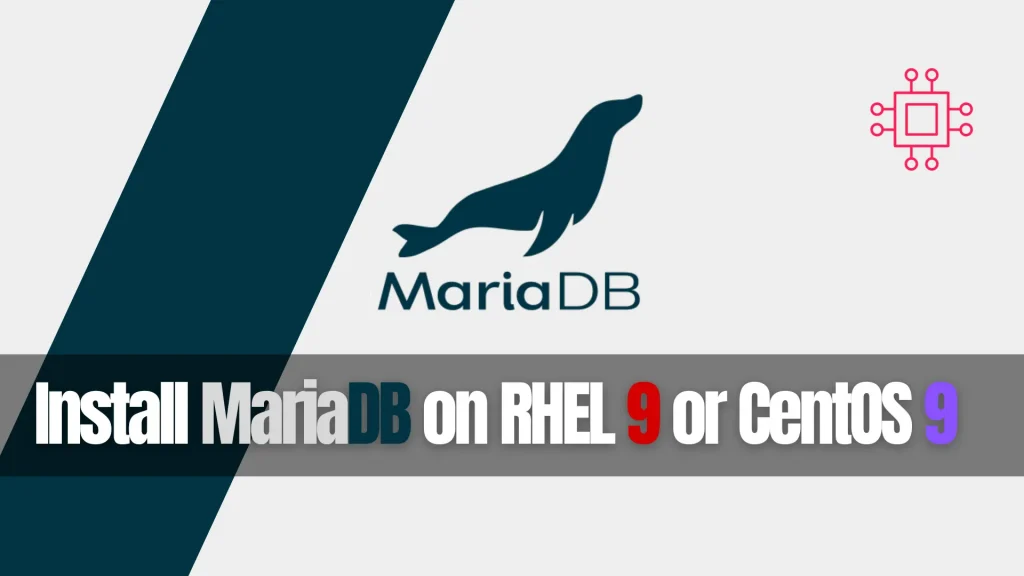Install Minikube on Ubuntu 24.04 Server

Learn how to install Minikube on Ubuntu 24.04 with this comprehensive step-by-step guide. Discover prerequisites, installation methods, resource management, and troubleshooting tips to set up your local Kubernetes environment effortlessly. Table of Contents Introduction Minikube is an essential tool for developers looking to set up a local Kubernetes environment. If you’re running Ubuntu 24.04, installing […]
Install MariaDB on RHEL 9 | CentOS 9: A Comprehensive Guide

Learn how to install MariaDB on RHEL 9 and CentOS 9 with this comprehensive step-by-step guide. Discover essential commands, configurations, and tips for setting up a robust database environment on your system. Perfect for beginners and seasoned users alike! Table of Contents 🔈Introduction Installing MariaDB on RHEL 9 or CentOS 9 can be a straightforward process […]
Install Rancher on RHEL 9 | CentOS 9: A Comprehensive Guide

Learn how to install Rancher on RHEL 9 and CentOS 9 with this comprehensive guide. Step-by-step instructions, Docker setup, and post-installation tips ensure a smooth Kubernetes management experience. Optimize your environment today! Table of Contents Introduction Rancher is an open-source platform that makes it easy to deploy, manage, and secure Kubernetes clusters. This guide will […]
Install and Use Gedit on Ubuntu 24.04

Learn how to install and use Gedit on Ubuntu 24.04 with our comprehensive guide. Discover features, keyboard shortcuts, and plugin options to enhance your editing experience, whether you’re a casual user or a developer. Table of Contents Introduction GEdit is a powerful yet straightforward text editor that comes pre-installed with the GNOME desktop environment. Known […]
Install LAMP Stack on RHEL 9 | CentOS 9 Using Podman

Learn how to install the LAMP stack on RHEL 9 | CentOS 9 using Podman with our comprehensive guide. Follow step-by-step instructions to set up Apache, MySQL, and PHP in a containerized environment for enhanced performance and security. Perfect for developers and system administrators! Table of Contents 🔈Introduction If you’re looking to set up a […]
Get an External IP for Kubernetes Services | On-Prem

Learn how to get an external IP for Kubernetes services on premises or in your homelab environment with tools like MetalLB, NodePort, and NGINX Ingress controller. Discover straightforward methods to assign external IPs and manage external access to your Kubernetes cluster. Table of Contents Introduction Setting up a Kubernetes cluster on-premises (on-prem) or in a […]
Enable FIPS mode on RHEL 9 | CentOS 9: A Comprehensive Guide

Learn how to enable FIPS mode on RHEL 9 and CentOS 9 with this comprehensive guide. Discover step-by-step instructions, CLI examples, and best practices to ensure your system meets regulatory compliance and enhances security. Table of Contents Introduction In today’s world, ensuring the security of your systems is paramount. For organizations that handle sensitive data, […]
How to Enable Gmail Notifications in Zabbix

Learn how to enable Gmail notifications in Zabbix with our step-by-step guide. Improve your IT monitoring by ensuring timely alerts and effective incident management. Perfect for Zabbix users looking to enhance their notification setup! Table of Contents Introduction In the realm of IT monitoring, Zabbix stands out as a powerful and versatile tool. However, to […]
What is the Role of Artificial Intelligence in Modern Information Systems?

Discover the role of artificial intelligence (AI) in modern information systems. Learn how AI enhances data analysis, cybersecurity, personalization, and more while addressing its benefits, challenges, and future potential. Table of Contents Introduction AI is revolutionizing modern information systems, transforming how data is managed, analyzed, and utilized. By integrating AI technologies into information systems, organizations […]
25 Essential Linux Commands For Efficient Storage Management

Discover 25 essential Linux commands for efficient storage management. Learn how to monitor disk usage, manage partitions, create filesystems, and optimize storage performance with detailed examples and practical tips. Table of Contents Introduction Managing storage on a Linux system is crucial for maintaining performance and ensuring data integrity. Whether you’re a seasoned sysadmin or a […]
